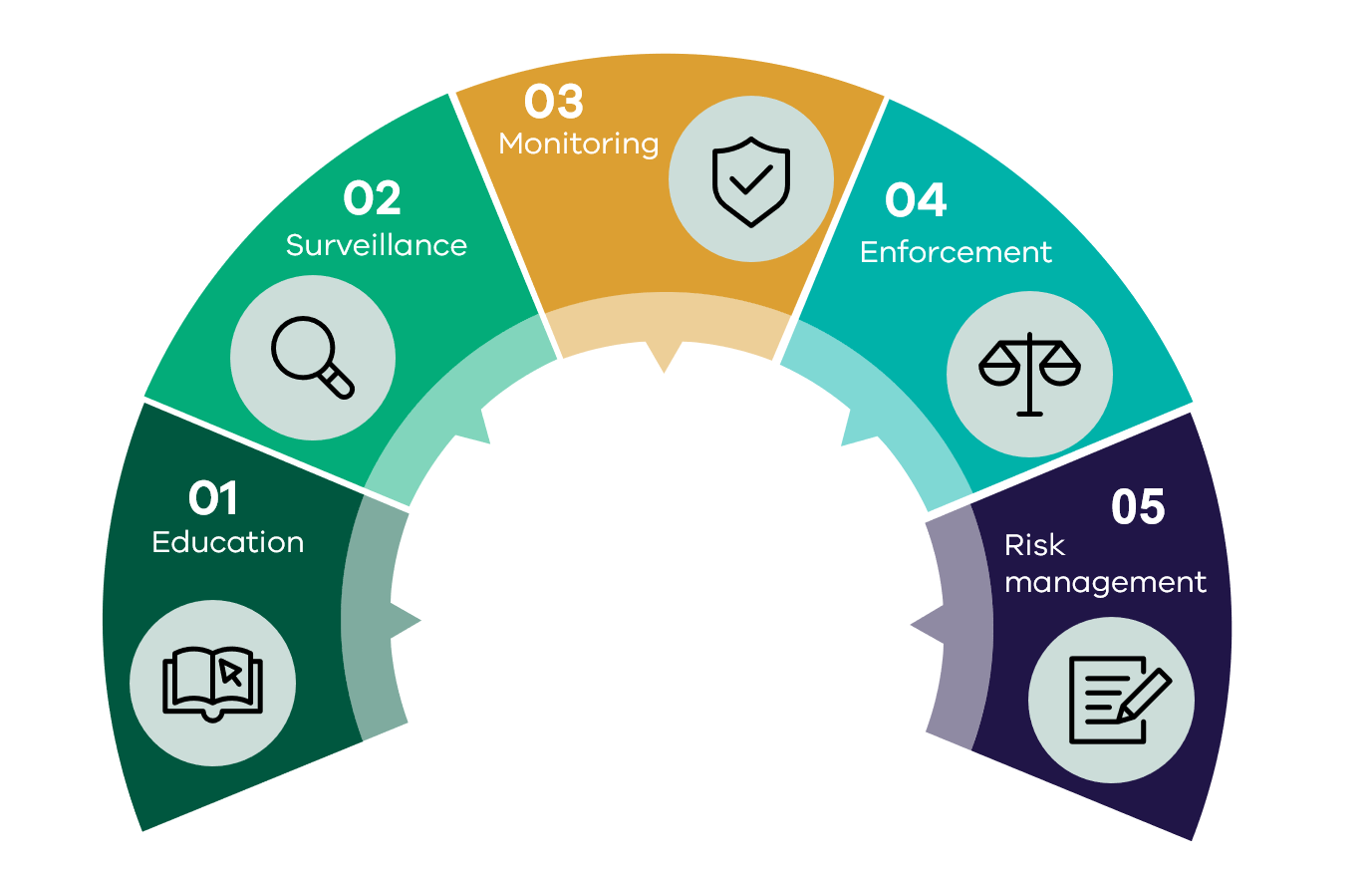Chemical use regulation
Regulatory overview
Agriculture Victoria delivers activities to ensure agricultural and veterinary (agvet) chemicals are used in accordance with obligations under relevant legislation. These activities are:

Education
Providing information to chemical users through a variety of pathways such as social media, website content and published material that allows users to voluntarily comply with relevant legislation and minimise risks.
Surveillance
Gathering intelligence about chemical use practices and performance. Sources include residue monitoring data, benchmarking survey projects, chemical use reports from the public, industry or governments, reported incidents involving agvet chemicals.
Monitoring
The gathering of specific information about chemical use that allows assessment of compliance with the legislation. This may include audits, investigations and residue testing programs that target selected commodities and chemicals.
Enforcement
Responding to identified non-compliance through a range of outcomes that are guided by a risk-based analysis approach assessing the likelihood and impact of a hazard relating to an offence.
Risk management
Identifying, analysing, prioritising resources and activities to treat risk and improve compliance. This includes communication and consultation with stakeholders, together with evaluation and monitoring of compliance activities.
Monitoring chemical use via residue testing
Agriculture Victoria uses agricultural chemical residue testing as a method to monitor chemical use practices and identify where improvements may be required.
A maximum residue limit (MRL) is the highest amount of an agvet chemical residue that is legally allowed in a food product sold in Australia. A residue detected in agricultural produce, which fails to meet the MRL is considered unacceptable.
Unacceptable residues are not a direct indication that produce containing the residue is unsafe to consume. While human health risks are factored in, MRLs are set at a concentration based on how much of the chemical is needed to control pests and/or diseases. When chemicals are used correctly, any residues detected in the product are not likely to exceed the MRLs.
Agriculture Victoria conducts targeted testing of Victorian grown produce. Commodity groups and sample locations are selected each year based on intelligence data and risk assessments.
Where unacceptable agricultural chemical residues are detected, Agriculture Victoria traces the produce back to the property of origin. The aim of this traceback strategy is to:
- determine the cause of the unacceptable residue
- identify any systemic issues relating to chemical use that led to the unacceptable residue
- ensure processes are put in place to prevent a recurrence in the future
- conduct an audit of all chemical use practices to assess the overall level of compliance on the property.
National residue survey
The National Residue Survey (NRS) was established in 1961 by the Commonwealth Government to measure pesticide residues in meat exports. It is now administered by the Department of Agriculture, Fisheries and Forestry (DAFF) and the scope of the program has expanded to other animal and plant products.
Selected Australian animal and plant products are tested for residues of agvet chemicals and environmental contaminants on behalf of participating industries.
The NRS assists participating industries to access key export and domestic markets by underpinning industry quality assurance programs.
The NRS notifies Agriculture Victoria of detected residues of concern in products produced in Victoria. These residues are assessed and may be investigated.
Further information on the NRS, including annual reports can be accessed from Department of Agriculture, Fisheries and Forestry.
Audits and investigations of chemical use
Authorised Officers conduct targeted audits of chemical users to assess compliance with relevant laws. These audits may be targeted to a specific chemical product or industry sector based on residue monitoring, intelligence reports, or risk assessments.
Investigations may be conducted where there is information suggesting non-compliance with chemical use laws. Enforcement actions, including prosecutions, may be undertaken if serious non-compliance is identified.